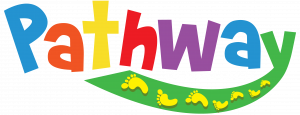We aren’t just talking about academics. Your child’s social, emotional, and behavior skills are equally critical to school success, and too many U.S. children start kindergarten without them.
In this article, the American Academy of Pediatrics (AAP) highlights rapidly expanding research on how you can determine school readiness and help your child prepare. (Hint: helping your child do well at school begins long before the first day of kindergarten).
| By law, children must be enrolled in school or an approved alternative program by a particular age. In most parts of the country, these age requirements are 5 years old for kindergarten and 6 years old for first grade. The National Center for Education Statistics tracks state requirements; check your state here. |
|---|
According to the AAP report on “School Readiness,” young children’s experiences―beginning at birth―play a big role in how well they learn to handle their feelings, relate to and communicate with others, and enter school ready to learn and achieve their full potential.
What does “school readiness” mean?
The idea that some children are “ready for school” by 4 or 5 and others are not is controversial. Just as children begin to walk or talk at different ages, they also develop the psychological and social skills needed for school at varying ages.
| The AAP supports wider access to quality early education and equipping schools to meet the needs of kindergarteners at all levels of readiness. This is especially true for children who may need additional support due to adverse childhood experiences (ACEs) or developmental disabilities such as autism spectrum disorders and attention deficit hyperactivity disorders. |
|---|
When you’re deciding when your child should start kindergarten:
- Look carefully at your child’s development. Is your child able to communicate? How are his listening and social skills? Would he be able to get along with other children and adults? Is he toilet trained? What about physical skills like running, playing, or using a crayon or pencil? Here are 10 milestones to watch for by age 5.
- Talk with your child’s pediatrician about developmental milestones and community resources that support them.
- Ask your child’s preschool teacher and/or childcare provider for feedback. He or she can often provide some useful, objective observations, and information.
- Trust your instincts—you know your child best!
| School readiness milestones: Important development milestones that help school go smoothly for children include: Sensory development―the ability to use touch, sight, and hearing to explore and figure out the world around them. Social, emotional, and behavioral development―such as being able to: focus and pay attention, control impulses and emotions take turns, cooperate and follow directions, make friends, empathize with others, control and communicate emotions, limit aggressive behaviors. Early language, literacy, and math skills― such as being able to talk, listen, and understand concepts like sound-letter associations, numbers, shapes, and how objects are related to each other. |
|---|
A word about kindergarten screenings or readiness testing:
Some schools may conduct their own tests to evaluate your child’s abilities. So-called “readiness tests” tend to look mostly at academic skills, but may evaluate other aspects of development, too. The tests are far from perfect; some children who do poorly on them do just fine in school.
The AAP believes kindergarten testing or screening should be used a tool to guide curriculum and instruction and support diverse groups of children rather than a gatekeeping test for children to enter school.
So, if the test or screening identifies some areas where your child seems to lag behind, use the information to help you and the school plan for the special attention he may need in the year of kindergarten ahead.
You are your child’s best advocate. By sharing information with your child’s teacher and other school staff, you can help them be ready for your child. At the same time, you are establishing a partnership for your child’s education that can and should continue throughout her childhood.
| Limit preschool apps and shows–even if they are educational. Online preschool activities and educational apps and shows should not take the place of important learning that takes place with face-to-face interactions and real-life experiences. The AAP recommends screen time other than video chatting is best avoided for children under 18 months old. Use the AAP Family Media plan to help balance screen time with time spent exploring the world and communicating and socializing with people around them that’s so important to a child’s development. |
|---|
Misconceptions about “redshirting:”
Some parents consider delaying their child’s entrance into kindergarten even though they are old enough to start school, especially if they have a child with a birthday close to the school entry cut-off date. This is called “redshirting,” and it’s a practice that some states are considering legislation to end.
Parents who hold their children back from kindergarten may believe they are giving them a better chance to succeed in academics, athletics, or social settings if she is older than average for her grade. This isn’t necessarily the case.
According to the AAP, labeling children as “not ready” for kindergarten and delaying the start of school can prevent them from being in the best learning environment.
Although there is some evidence that being among the youngest in a class may cause some academic problems, most of these seem to disappear by the third or fourth grade. On the other hand, other research suggests that children who are old for their grade are at considerably greater risk of behavior problems when they reach adolescence.
Early education starts and ends at home.
You are your child’s first and greatest teacher. Put down your smartphone. Reinforce what your child learned in preschool. Find time to talk with your children about their respective days—including what they did at school. Plan some activities that you can do with your child—such as an art project. Get more ideas here.
